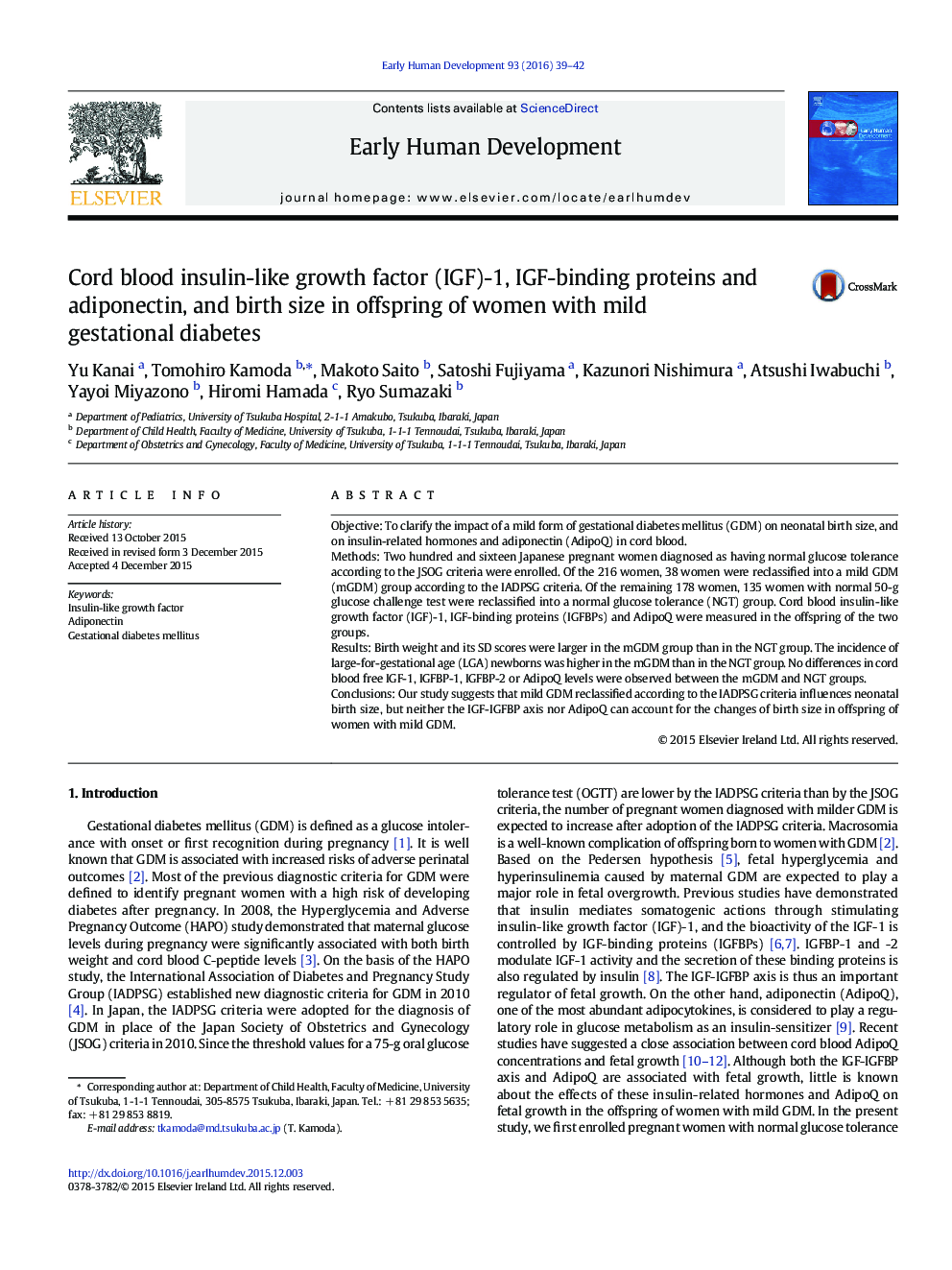| Article ID | Journal | Published Year | Pages | File Type |
|---|---|---|---|---|
| 3916558 | Early Human Development | 2016 | 4 Pages |
•We clarified the impact of mild GDM on neonatal birth size and insulin-related hormones.•Mild GDM increases incidence of LGA, but not of macrosomia.•Insulin-related hormones in cord blood are not changed by mild GDM.•Neither IGF-IGFBP axis nor adiponectin can account for the change of birth size.
Objective: To clarify the impact of a mild form of gestational diabetes mellitus (GDM) on neonatal birth size, and on insulin-related hormones and adiponectin (AdipoQ) in cord blood.Methods: Two hundred and sixteen Japanese pregnant women diagnosed as having normal glucose tolerance according to the JSOG criteria were enrolled. Of the 216 women, 38 women were reclassified into a mild GDM (mGDM) group according to the IADPSG criteria. Of the remaining 178 women, 135 women with normal 50-g glucose challenge test were reclassified into a normal glucose tolerance (NGT) group. Cord blood insulin-like growth factor (IGF)-1, IGF-binding proteins (IGFBPs) and AdipoQ were measured in the offspring of the two groups.Results: Birth weight and its SD scores were larger in the mGDM group than in the NGT group. The incidence of large-for-gestational age (LGA) newborns was higher in the mGDM than in the NGT group. No differences in cord blood free IGF-1, IGFBP-1, IGFBP-2 or AdipoQ levels were observed between the mGDM and NGT groups.Conclusions: Our study suggests that mild GDM reclassified according to the IADPSG criteria influences neonatal birth size, but neither the IGF-IGFBP axis nor AdipoQ can account for the changes of birth size in offspring of women with mild GDM.
